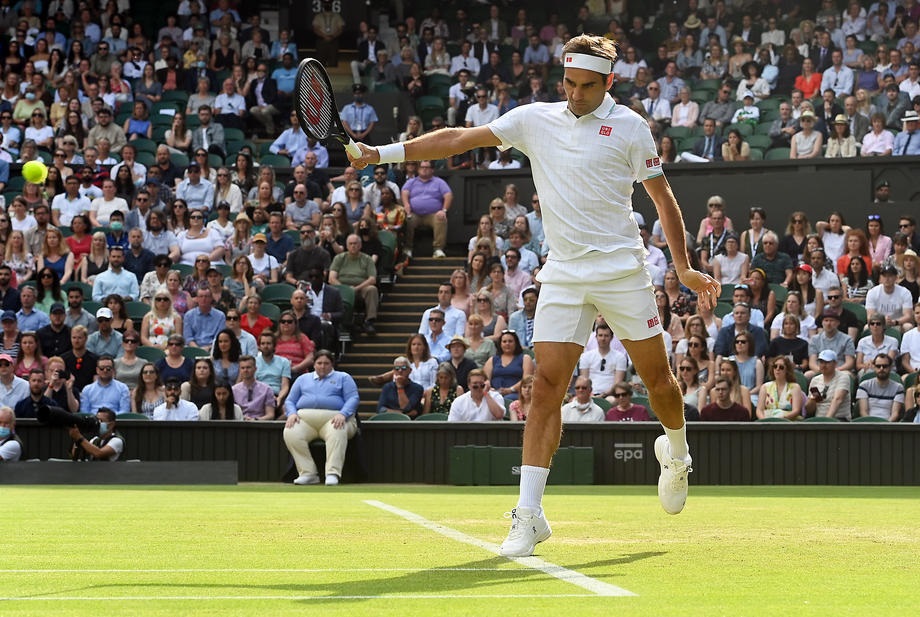- Mutua Madrid Open Schedule and Draws for Wednesday, April 24, 2024
- Novak Djokovic Earns 5th Laureus World Sportsman of the Year Award
- Mutua Madrid Open Schedule and Draws for Tuesday, April 23, 2024
- Rafael Nadal Commits to 2024 Laver Cup
- Mutua Madrid Open Schedule and Draws for Monday, April 22, 2024
- Casper Ruud Tops Stefanos Tsitsipas for Barcelona Title
- Former World No. 1 Garbiñe Muguruza Retires
- Fritz Flies Into First Clay-Court Final in Munich
- Munich Open Schedule and Draws for Sunday, April 21, 2024
- Home For Sale Minutes From The Indian Wells Tennis Gardens
- Ricky’s pick for the Barcelona final: Ruud vs. Tsitsipas
- Barcelona Open Schedule and Draws for Saturday, April 20, 2024
- Munich Open Schedule and Draws for Saturday, April 20, 2024
- Swiatek Defeats Raducanu to Set Up Stuttgart Semifinal vs. Rybakina
- Munich Open Schedule and Draws for Friday, April 19, 2024
Serena Williams, Naomi Osaka and Simona Halep all Crash Out of the Italian Open While the French Open Prepares to Welcome Back Fans
- Updated: May 13, 2021

By Alix Ramsay
It was supposed to be a momentous milestone and something to celebrate but Wednesday in Rome did not turn out the way that Serena Williams wanted.
She was playing the 1,000th match of her career and taking on the world No.44, Nadia Podoroska. Novak Djokovic led the tributes as the great and the good lined up to congratulate the former No.1 on such an historic achievement. And then Podoroska went and spoiled it all by beating the living legend 7-6, 7-5.
Then again, Podoroska was a semi-finalist at last year’s French Open and she knows her stuff on the red clay. In a perfect world, she would have wrapped up the second set 6-3 but she got a fit of the jitters as she went to serve it out and offered Williams a bit of lifeline. Given a second chance to seal the deal, she kept her nerves in check and sent Williams packing.

The result was not exactly unexpected. Willams had not played a match since the Australian Open semi-finals back in February and since the birth of her daughter Olympia in 2017, she had played only eight matches on clay. And only one of them was last year.
Serena was not in great nick: the first serve was wobbly, the movement was dodgy and it took her the best part of a set to ignite the fearsome competitive fire that has won her 23 grand slam titles. She was well beaten by a woman who was, on the day, a far better clay court player. And she knew it.
“[It was] just filling out the game, finding the rhythm [that was the problem],” she said.
“Even sliding and confidence with that, with movement, and just not wanting to break my ankle when I moved. That’s always like a little struggle in the first two matches, and then I’m raring to go.
“Yeah, that’s kind of where I was struggling a little bit, and just final shots. Like, I had a lot of opportunities to win, like, final shots and just kind of missing those.
“Overall, it was good for me to play such a clay court player on clay today, but it’s a little frustrating. But it’s all right. It is what it is.”
Thanks to the French Open being pushed back by a week, Williams has a little more time than usual to make her preparations for Roland Garros. She has been on the practice court for months so maybe more matches are needed. But does she want to flog herself around a couple more tournaments before launching another grand slam campaign? As of Wednesday night, she really had no idea.
“It’s tough to have a first match on clay,” she said. “It was definitely kind of good to go the distance and to try to be out there but, clearly, I can do legions better. I’ve just got to get there.
“Maybe I do need a few more matches, so I’m going to try to figure that out with my coach and my team and see what we would like to do. But, yeah, I just feel like it’s different. I have been training for months, but it feels definitely different on clay to make that last adjustment. I’m not playing as many matches. I’m just doing a lot of training. So it’s actually really good to get out and to play some matches. But the training isn’t for nothing, so I know that it’s just a matter of time.”
Williams was not the only serial grand slam winner to be removed from the Foro Italico. Naomi Osaka’s miserable run on the red dirt continued as she was dispatched by Jessica Pegula 7-6, 6-2 but for Simona Halep, the damage was far more serious.

Halep was cruising against Angie Kerber when she felt something go in her left calf muscle. At first she was not sure quite what had happened but a matter of moments later, she was hobbling out of the Italian Open in tears, retiring against the German at 6-1, 3-3.
Calf issues can take their time to heal. A grade one tear could take two to three weeks to mend; a grade two tear could mean four to six week recovery time while a grade three tear could mean months of treatment and rehab. Halep and her sore leg have 18 days until the start of the French Open.

Meanwhile, the FFT have announced their plans for admitting spectators to Roland Garros as France gradually comes out of lockdown.
The qualifying event starts on May 24 and will take place behind closed doors. But once the main draw starts on May 30, the public will be allowed in and the French Open will tiptoe towards a degree of normality.
From May 30 to June 8, the Roland Garros site will be divided into six zones: Philippe-Chatrier court, Suzanne-Lenglen court, Simonne-Mathieu court, Courts 2 to 5, Courts 6 to 9 and Courts 10 to 14. Each zone is allowed up to 35 per cent of capacity with an upper limit of 1,000 fans.
Everything changes, though, from June 9, as the lockdown will be relaxed even further. From that date, the FFT can bring up to 5,000 fans into Philippe-Chatrier court but every fan will have to produce a “health passport” to get in. That means stumping up proof of either a negative PCR test carried out within 48 hours, a vaccine certificate or a positive covid test more than two weeks and less than six months old. In those last few days of the tournament, around 13,000 fans will be allowed on site.
The only downside for the FFT in all of this is the effect on the launch of their new night sessions on Philippe Chatrier court. The night matches will still go ahead but due to the 9pm curfew currently in place in France, they will be held behind closed doors until June 9. From then on, the curfew will begin at 11pm so allowing the FFT to stage a men’s quarter-final on that Wednesday evening. That will start at 8pm with 5,000 masked fans enjoying every shot. And presumably, the players will be told not to hang about so that the paying public can see the match through to its conclusion.
And finally, we give you a rare sighting in 2021: Andy Murray in competitive action. The Scot went to Rome to get some clay court practice against the big boys – he had a work out with Djokovic amongst others – but then entered the doubles with Liam Broady. And on Wednesday evening, the Brit combo came back from a set and a break down to beat Max Purcell and Luke Saville 5-7, 7-6, 10-6 in a minute over two hours.

Given that Murray is trying to prove to the FFT that he is fit and competitive and, so, deserving of a wild card for the French Open, he had done his cause no harm whatsoever. And if he doesn’t get a wild card, Murray has certainly not ruled out the possibility of going through the qualifying competition – he ain’t proud; he just wants to compete. That’s our Muzza.






